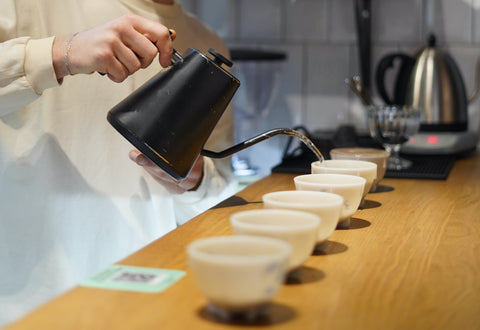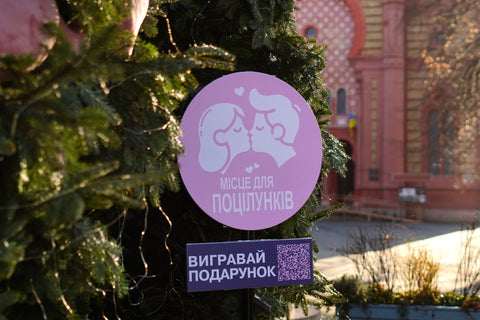Coffee tasting, or cupping, is a coffee evaluation method used by coffee industry professionals to determine the quality and properties of coffee.
Although the term originates from "cup tasting", cupping differs from regular tasting in its specific and strict parameters, as well as (usually) its function in the process of buying and selling green coffee.
Who can drip?
In general, anyone can taste coffee, but mostly professionals do it.
- Traders evaluate the coffee to decide whether it is worth buying several tons for their coffee company.
- Roasters evaluate the profile of the coffee they used to roast a particular variety.
- Baristas and other professionals develop their sensory skills.

![]() Yuliya Dzyadevych on a farm camping trip in Costa Rica.
Yuliya Dzyadevych on a farm camping trip in Costa Rica.
Some seek to enjoy coffee out of curiosity about the variety of Arabica, while coffee specialists - to ensure the quality of the product, trying to avoid negative aspects such as mold or other defects.
How is the cupping going?
- Brewing. The coffee is ground, the aroma of dry beans is evaluated and hot water (94-96°C) is poured into a cup. Ground grain rises to the surface of the water, forming a crust. Brewing and infusion time - 4 minutes.
- Breaking the crust. After steaming, the coffee crust is broken using special cupping spoons. With the back of a spoon, the foam is pushed away and the aroma is evaluated.
- Cleaning the cup. Here, two cupping spoons are used to remove the foam from the coffee until the surface of the poured coffee is clean. The time of this process is about 1 minute.
- Tasting . During the cooling of the coffee, from the 8th minute, we taste the coffee, making a characteristic "sorbok", up to 16-20 minutes. Sipping helps the coffee to come into contact with as much oxygen as possible, and its flavor is revealed in the best way.
- Assessment of acidity. The more the coffee cools, the more pronounced the acidity becomes. It is important to follow this dynamic of changes during the entire cupping.
- Description of dynamics. After each cup, an impression of taste, aroma and other characteristics is recorded on standardized forms.

Can a man become the world's best privateer?
There is such a thing as competitive Cup Tasting, but it is significantly different from traditional coffee tasting.
In captasting, coffee is analyzed by a form of triangulation. Several types of coffee are prepared, and each participant is served 8 groups of cups. In each group, there are 3 cups, 2 of which contain the same coffee, and the third is somewhat different. A different coffee cup is marked with a label on the bottom. Contestants cannot lift the cup because the rules forbid it. They can only smell the coffee, taste it with a spoon and determine the best among the three. 8 minutes are allotted for this task. During this time, the participant must separate one cup of coffee in each group. If he does not make it, he is disqualified, and if he makes it, his time is recorded.
Kateryna Bezruk at the World Cup-Tasting Championship 2024 in Chicago.
Speed is the key factor here, unlike classic cupping, where the taster's brain analyzes a wide range of possible characteristics. In captasting, the most obvious differences are highlighted - this is the only opportunity to win.
Practicing tastings with triangulation is a great way to train your brain. In addition, this is a very fun competition format!






